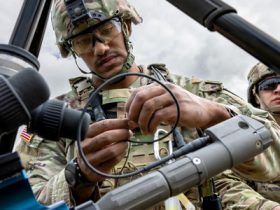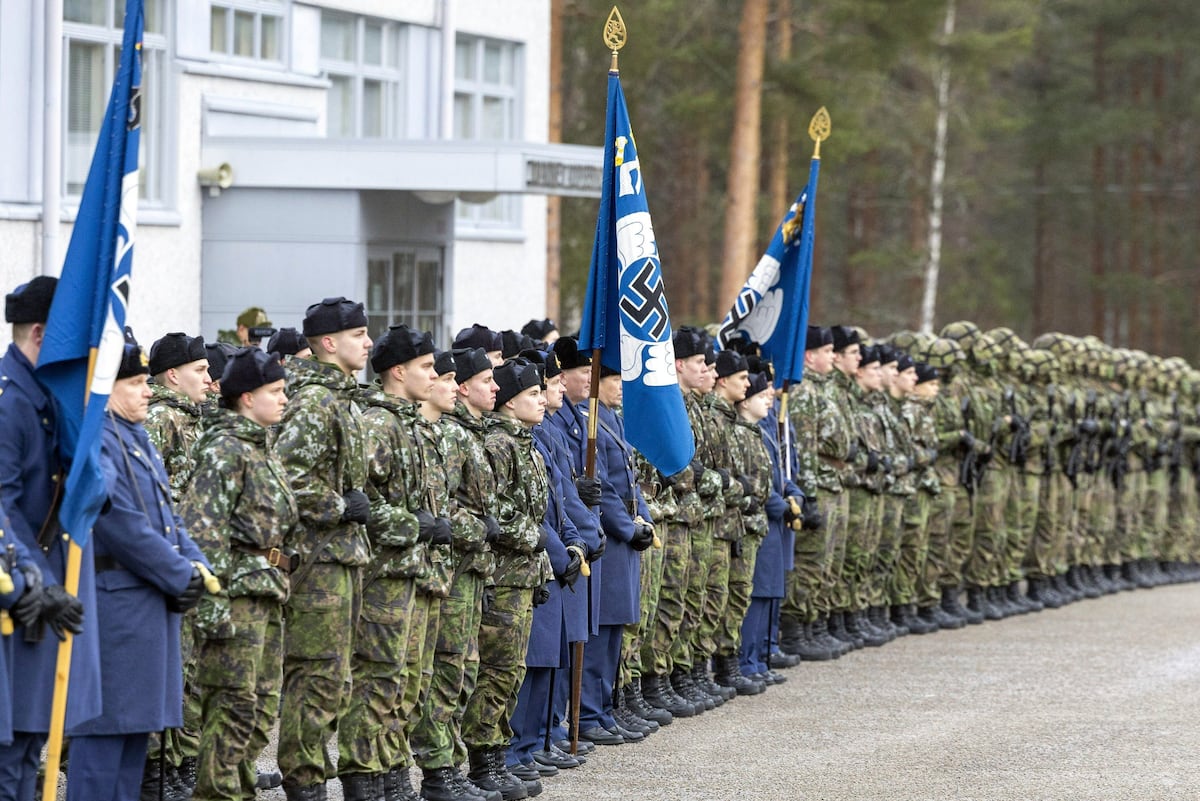THE HAGUE, Netherlands — The United Kingdom will buy 12 F-35A fighter jets, marking a significant boost to the country’s nuclear deterrence posture, Prime Minister Keir Starmer said.
Announced ahead of the NATO summit held this week in The Hague, the government called it “the biggest strengthening of the UK’s nuclear posture in a generation.” The new procurements will allow Britain to “join NATO’s nuclear mission” by reintroducing to the Royal Air Force so-called dual-capable aircraft: airframes that can carry both conventional and atomic payloads. Seven other NATO countries, including the U.S., Germany, Belgium, the Netherlands, Turkey, Greece, and Italy, currently operate such platforms.
The NATO airborne nuclear mission involves European partner countries delivering American B-61 nuclear bombs on behalf of the alliance in the case of a nuclear war. Under the agreement, even though the bombs are carried by European planes and European pilots, the U.S. would have the final command over the nuclear bombs’ control and release.
The United Kingdom already has a fleet of F-35B’s, a different variant of the aircraft that has short takeoff and vertical landing (STOVL) capabilities. London is in the process of completing its first procurement batch of 48 F-35B’s, with over 30 already delivered. The F-35A, by contrast, can carry more weapons and has a greater range than its STOVL counterpart.
In total, Britain will purchase 138 F-35s throughout the program.
RELATED
Since 1998, when the last of Britain’s air-dropped atomic bombs were decommissioned, the UK’s nuclear deterrence has relied exclusively on the nuclear-tipped missiles continuously deployed at sea aboard the Royal Navy’s Vanguard-class submarines. The country has recently initiated a major overhaul of its nuclear posture, investing in the development of a new kind of nuclear warhead, replacing its submarine fleet by the turn of the decade, and working to reestablish nuclear fuel autarky. The upgrade will cost tens of billions of pounds.
American nuclear bombs have not been stationed in the UK since 2008 but the latest announcement all but confirms their return. Observers had pointed out apparent preparations for the re-deployment of American nuclear bombs in recent years: The UK was added to NATO’s list of nuclear weapons storage locations receiving upgrades under a multimillion-dollar infrastructure program, and U.S. Air Force budget documents from 2023 used language suggesting the construction of a nuclear bomb storage site at RAF Lakenheath.
The UK government has said the new jets will be based at RAF Marham.
Prime Minister Starmer said that in his estimation, “an era of radical uncertainty [in which] we can no longer take peace for granted” made these measures necessary. NATO Secretary General Mark Rutte “strongly welcomed” London’s decision to join the airborne nuclear mission, adding that “this is yet another robust British contribution to NATO.”
At the NATO summit in the Netherlands this week, leaders of the alliance’s member countries are expected to agree to a substantial increase in defense spending of up to 5% of gross domestic product.
Linus Höller is a Europe correspondent for Defense News. He covers international security and military developments across the continent. Linus holds a degree in journalism, political science and international studies, and is currently pursuing a master’s in nonproliferation and terrorism studies.
Read the full article here








Leave a Reply